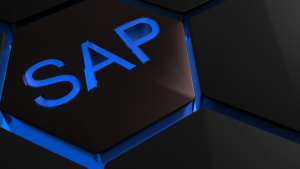- Justin Parker
- Reading Time: 4 minutes

At SAP Sapphire 2025, one message rang clear: the convergence of SAP’s roadmap with AI and enterprise cloud is accelerating. For CIOs, this means balancing innovation imperatives with operational stability and doing so with greater urgency than ever. Insights from dozens of executive conversations at the event revealed that SAP’s evolution is a strategic moment CIOs must seize, or they risk falling behind.
Here are the strategic imperatives and field-level insights every CIO should take away from this year’s event:
- Deliver an Enterprise-Wide SAP Roadmap Or Risk Losing Control
- Build an AI Strategy: Internal Innovation vs. Application-Embedded Capabilities
- Modernization Pressure: ECC, S/4HANA and the RISE Evolution
- Rationalize Best-of-Suite vs. Best-of-Breed With Eyes Wide Open
- Align Application and Infrastructure Strategy Now More Than Ever
- Industry Hesitation on RISE, But Readiness Is the Differentiator
- SAP’s Missed Opportunity: AI as an Implementation Accelerator
1. Deliver an Enterprise-Wide SAP Roadmap Or Risk Losing Control
CIOs are under pressure from boards and executive leadership to present a multi-year, enterprise-wide SAP strategy. That roadmap must address:
- Interim upgrades vs key transformation initiatives
- Cloud migration plans aligned with hyperscaler strategies
- Integration of SAP AI into broader “build vs. buy” AI strategy
- Enablement of enterprise and line-of-business goals
- Visibility into contract milestones, licensing, support, and AI-related cost risks
Without this integrated strategy, organizations are at risk of being caught flat-footed in negotiations and enterprise planning.
2. Build an AI Strategy: Internal Innovation vs. Application-Embedded Capabilities
AI isn’t just a tech initiative, but rather a competitive differentiator. CIOs must weigh key decision factors and approaches such as:
- Leveraging vendor-native AI for non-core, commodity processes (e.g., finance, procurement, HR)
- Developing internal AI capabilities for differentiating workflows and IP protection
Beyond staying current with rapid AI advancements, CIOs must overcome challenges related to:
- Agent interoperability across vendors and platforms
- AI pricing, licensing, and data protection
- Governance of multi-agent orchestration
The decisions made today around AI integration, orchestration, and governance will determine enterprise agility and digital competitiveness for the next decade.
3. Modernization Pressure: ECC, S/4HANA, and the RISE Evolution
Every organization sits at a different point in their SAP journey and each position dictates a unique balance of risk, urgency, and strategic leverage.
ECC Customers: RISE Momentum is Building
ECC customers are approaching a critical cliff. Some are embracing RISE to avoid innovation stagnation and to benefit from SAP’s AI roadmap. Others:
- Lack appetite for transformation or are fatigued from recent efforts
- View SAP as non-differentiating
- Struggle to build a compelling business case
- Are balancing phased deployments (brownfield-to-greenfield) to mitigate the ECC support cliff
CIOs must consider segmenting their SAP footprint and business lines to tailor transition strategies as RISE may not be a one-size-fits-all solution across the enterprise.
S/4HANA Customers: Reassessing Post-Deployment Strategy
S/4 On-Prem customers generally fall into three categories:
- Mid-deployment: Focused on delivery execution, not evaluating RISE
- Post-deployment: Reassessing RISE in light of AI innovation and platform evolution
- Hybrid ECC/S4 environments: Managing fragmented landscapes from M&A or siloed business units
RISE is no longer just an upgrade. It’s becoming a platform shift that must be strategically timed and justified. Your position in the journey dictates not only the strategic considerations you must address, but also your commercial leverage with SAP.
4. Rationalize Best-of-Suite vs. Best-of-Breed With Eyes Wide Open
SAP’s “suite as a service” message was front and center at Sapphire, emphasizing simplified integration and security, but CIO sentiment is still split. Key concerns include:
- Loss of commercial flexibility and operational control
- Forced subscription transitions
- Lack of proven ROI
CIOs must weigh whether suite simplification justifies the trade-offs in flexibility, innovation control, and long-term commercial leverage.
5. Align Application and Infrastructure Strategy Now More Than Ever
CIOs must bridge the gap between application and infrastructure leadership as RISE decisions impact:
- Cloud strategy and existing contracts
- OpEx models and scalability
- Network, security, and governance design
Without early and deep involvement from infrastructure leaders, SAP strategy decisions, especially around RISE, can create serious cost, scalability, and operational blind spots.
6. Industry Hesitation on RISE, But Readiness Is the Differentiator
Many industry leaders are waiting to see how peers fare with RISE before committing. You don’t need to be first, but you do need to be ready. Build your internal business case now to avoid delays when the decision becomes non-negotiable.
Understanding when your peers are transitioning to RISE and conducting an evaluation positions your organization for decisive actions and boosts your strategic leverage.
7. SAP’s Missed Opportunity: AI as an Implementation Accelerator
Even though SAP acknowledged customers’ migration challenges, what was missing at Sapphire was a clear, bold message about how AI is helping partners speed up implementations and cut costs. This presents an interesting opportunity for CIOs.
CIO Opportunity:
- Demand AI-powered automation in system integration, testing, and change management
- Push system integrators for proof of reduced implementation timelines and baseline costs using AI
Transformation fatigue is real and AI should be the antidote. CIOs must ensure AI delivers tangible value during implementation, not just post-deployment.
Final Thought: This Is a CIO Moment
SAP Sapphire 2025 confirmed that CIOs are no longer just technology enablers, they are architects of enterprise transformation. AI, cloud orchestration, and commercial alignment now define your roadmap’s success.
At UpperEdge, we partner with CIOs to navigate these strategic inflection points, bringing commercial discipline, roadmap clarity, and vendor accountability to the forefront.
Let’s make sure your SAP strategy isn’t just aligned with today’s goals but prepared for tomorrow’s demands. Explore our SAP Advisory Services to see how we can help.
Related Blogs
SAP Cloud ERP Packaging: Price Hikes Without Transparency
Deloitte’s Defense Unfolds: The Contract That Could Decide the Zimmer Biomet Case
Inside SAP’s Q3 2025: Strong Cloud Growth, AI Push, and Pricing Power Plays
About the Author
